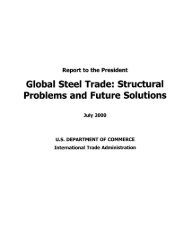Vietnam Environmental Technologies Export Market Plan
Vietnam Environmental Technologies Export Market Plan
Vietnam Environmental Technologies Export Market Plan
Create successful ePaper yourself
Turn your PDF publications into a flip-book with our unique Google optimized e-Paper software.
3.3 <strong>Environmental</strong> Impact Assessments<br />
All projects implemented within <strong>Vietnam</strong> are subject<br />
to environmental standards issued by MOSTE, of which<br />
there are currently over 100.<br />
MOSTE requires environmental impact assessments<br />
(EIAs) from two types of investment projects. Group I<br />
investment projects are those that can potentially cause<br />
wide-scale environmental pollution, easily cause<br />
environmental pollution, or are difficult to control and<br />
for which it is difficult to determine environmental<br />
standards. In practice, these are the only projects that<br />
require detailed EIAs.<br />
Group II investment projects are all the remaining<br />
projects, and the applicant must prepare and analyze its<br />
own EIA reports in order to receive a certificate of<br />
“registration of satisfaction of environmental standards.”<br />
In practice, these assessments are very general and are<br />
not scrutinized by government agencies.<br />
For companies located in industrial zones, the<br />
industrial zone authority submits the EIAs for tenants.<br />
When applying to the Ministry of <strong>Plan</strong>ning and<br />
Investment for an investment license, the application must<br />
contain a summary of the potential environmental impact<br />
of the particular project. The application must include<br />
information about the proposed site, a summary of the<br />
production technology, any sources of pollution, all<br />
measures to minimize that pollution, the environmental<br />
supervision program, and all undertakings to satisfy<br />
environmental standards. At this point, MOSTE decides<br />
whether the project falls into Group I or Group II.<br />
After the investment license has been issued and the<br />
project site determined, an application file containing<br />
environmental impact documentation must be submitted.<br />
(In the case of petroleum projects, the EIA report must<br />
also include plans for controlling oil spills.)<br />
According to Circular 490, issued by the prime<br />
minister, Group I projects include some of the following:<br />
• Projects situated within or close to environmentally<br />
sensitive areas, such as natural parks, tourist sites,<br />
cultural vestiges of international and national interest;<br />
• Projects developing a master plan for (a) a whole region<br />
(b) a whole sector (c) a city (d) IP or export processing<br />
zone;<br />
• Projects on oil and gas: (a) exploitation, (b) processing,<br />
(c) transportation, and (d) warehousing (greater than<br />
20,000 cubic meters);<br />
• Steel and metallurgy (greater than 100,000 tons per<br />
year);<br />
• Tanneries (greater than 10,000 tons/year);<br />
• Textiles (greater than 20 million meters/year);<br />
• Paints (greater than 1000 tons/year);<br />
• Rubber processing (greater than 10,000 tons/year);<br />
• Sugar (greater than 10,000 tons of sugar cane/year);<br />
• Food processing (greater than 1,000 tons/year);<br />
• Ice and Freezing (greater than 1,000 tons/year);<br />
• Thermo electricity (greater than 200 megawatts);<br />
• Pulp and paper (greater than 40,000 tons of pulp/year);<br />
• Cement (greater than 1 million tons/year);<br />
• Tourism and entertainment zone (greater than 100<br />
hectares);<br />
• Airports;<br />
• Ports (for vessels greater than 10,000DWT);<br />
• Railways, highways, roadways longer than 50 km;<br />
• Hydroelectric plants (with reservoir greater than 100<br />
million cubic meters);<br />
• Irrigation systems (servicing areas greater than 10,000<br />
hectares);<br />
• Ore exploitation (total ore, earth, stone volume greater<br />
than 100,000 cubic meters/year);<br />
• Forestry (all kinds of wood exploitation);<br />
• Aquaculture (areas greater than 200 hectares);<br />
• Hazardous chemicals production and warehousing (all<br />
kinds);<br />
• Nuclear reactors (all kinds).<br />
A number of state agencies may judge the EIAs to<br />
determine whether the project will be approved. MOSTE,<br />
the local People’s Committee where the project is being<br />
undertaken, the local DOSTE, the National <strong>Environmental</strong><br />
Agency, or the supervising ministry under which<br />
the project may fall can all theoretically approve,<br />
disapprove, or make recommendations concerning a<br />
project based on the EIA.<br />
In practice, the effectiveness of EIAs is weak.<br />
Companies are able to submit plans for installing waste<br />
treatment facilities and receive an investment license, but<br />
then never follow up on installing the plant as promised.<br />
In some cases, companies have won investment licenses<br />
without submitting EIAs.<br />
12 U.S. Department of Commerce, International Trade Administration
















